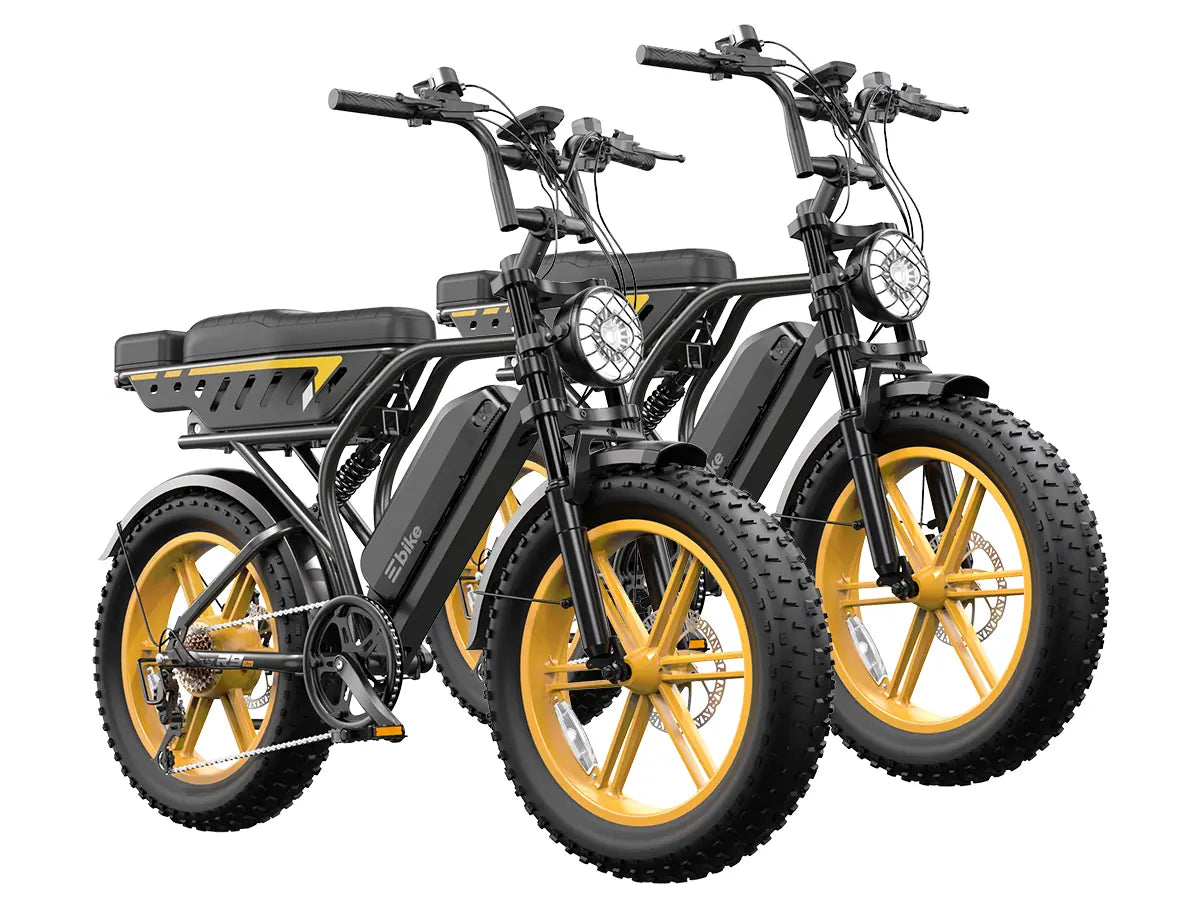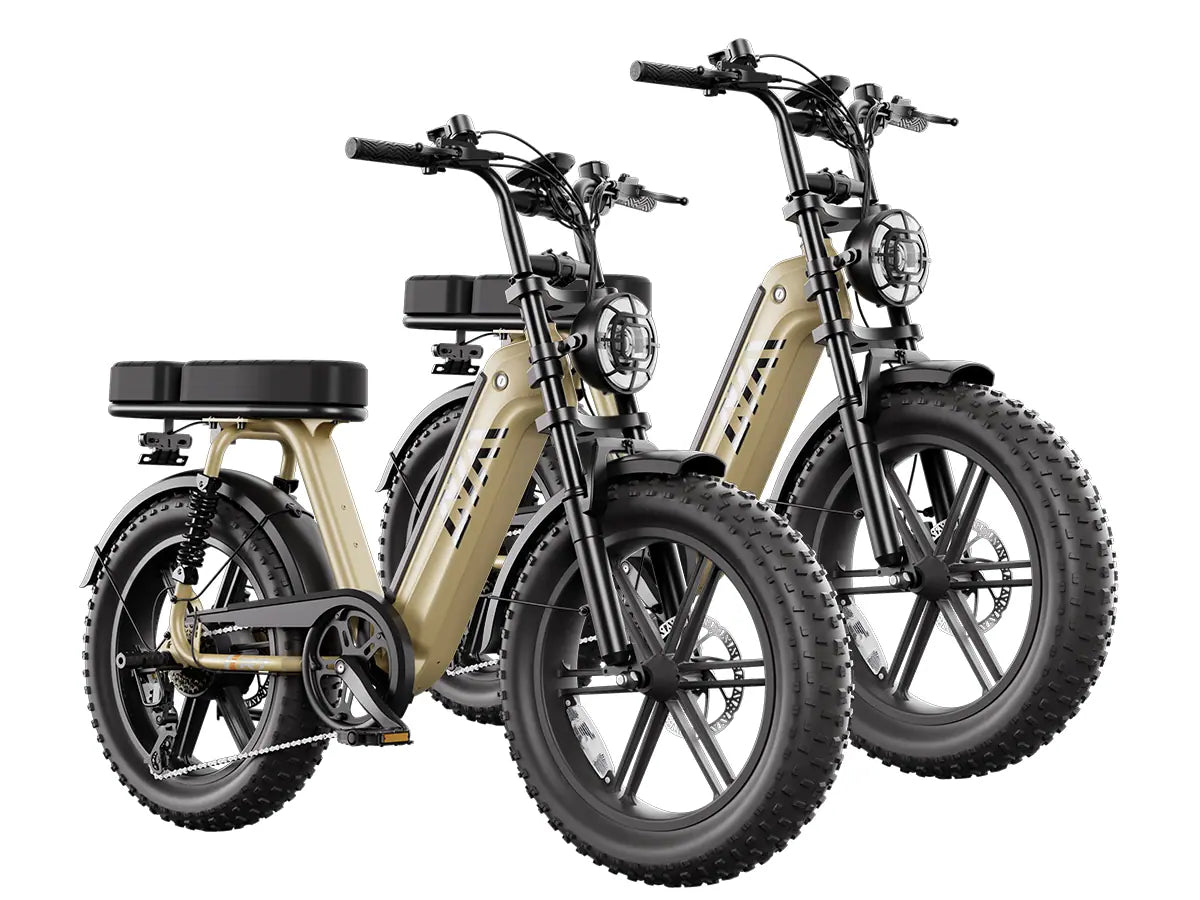Electric bikes, or electrical bikes, fuse classic cycling with battery-powered propulsion to offer an agile, eco-sensitive alternative to cars. They enable effortless commutes, smooth hill climbs, and longer journeys, redefining what urban travel can be. In 2025, electric bikes span extreme, hybrid, and commuting models, so discerning what features fit your needs and where TST EBike excels is crucial for making the right choice.
What are the best electric bikes in 2025?
The best electric bikes in 2025 elevate the cycling experience through innovation, reliability, and user-centric design. High-powered motors, long-lasting batteries, and sophisticated control systems now fuse with user feedback to produce electrical bikes ready for any environment. Commuters often favor lightweight models boasting moderate speed and range, while adventurers gravitate towards fat-tire beasts with stouter frames and hill-climbing torque. Each electrical bike in today’s market strives to combine performance, sustainability, and comfort, ensuring a seamless journey—whether traversing urban grids or rural landscapes. Names like TST EBike stand out by integrating quality control, diverse model selection, and consumer-driven improvements into every design.
Chart: Electric Bike Types & Features (2025)
| Model Category | Typical Motor Power | Terrain Suitability | Popular Uses |
|---|---|---|---|
| Commuter | 250W–500W | Pavement, daily commuting | Urban travel, work commute |
| Fat-tire | 500W–1000W | Sand, snow, rough trails | Adventure, off-road |
| Mountain | 500W–950W | Trails, hills, mixed paths | Mountain biking, fitness |
| Folding | 250W–500W | Urban, storage constraints | RV trips, apartment living |
| Hybrid | 350W–750W | Smooth & mixed surfaces | Recreational, fitness |
What factors should I consider when choosing an electric bike?
What must you examine before choosing from a dizzying array of electrical bikes? First, clarify your main use: daily city sprints, sandy or snowy adventures, rugged mountain escapades, or multi-modal urban commutes. Battery range—spanning 20 to 100+ miles per charge—should match your typical distance. Motor placement matters: mid-drive motors excel in hill climbing and weight balance, while hub motors offer simplicity and quietness. Size and weight impact portability and maneuverability, so envision lifting your electrical bike up stairs or gliding through traffic snarls. Examine features such as pedal assist levels, throttle modes, frame suspension, integrated lights, and racks. Finally, prioritize reputable electrical bike brands with reliable after-sales support, like TST EBike, ensuring you travel with reliability and peace of mind.
Chart: Top Selection Criteria for Electrical Bikes
| Criteria | Relevance |
|---|---|
| Intended Use | Commute, leisure, off-road, or mixed terrains |
| Motor Power | Impacts acceleration, hill performance |
| Battery Range | Determines maximum distance on a single charge |
| Frame/Weight | Affects ride comfort and transport ease |
| Assist Modes | Number of levels and throttle/pedal combinations |
| Quality Control | Warranty, support, and consumer feedback integration |
Which types of electric bikes are available and what are their uses?
Which electrical bikes conquer which terrains? Commuter electrical bikes focus on comfort, upright riding, and utility accessories like racks and fenders. Fat-tire electrical bikes, popularized for snow and sand, pair chunky 26-inch tires with robust motors—ideal for unpredictable outdoor adventures. Mountain electrical bikes ramp up suspension and traction, allowing dynamic trail navigation and fitness-focused riding. Folding electrical bikes compress effortlessly for storage, blending seamlessly with urban micro-apartments or RV lifestyles. Meanwhile, hybrid electrical bikes strike a middle ground, blending versatility with road-friendly ergonomics, suitable for everything from grocery runs to weekend getaways. It’s clear—there’s an electrical bike for every lifestyle, powered by ever-evolving technology and responsive innovation across brands like TST EBike.
What features make electric bikes suitable for daily commuting and rough terrains?
How do electrical bikes outshine tradition when road conditions shift? Key features include flexible motor assistance (from gentle to high-torque), robust tire tread for grip, weather-resistant components, and modular frame designs to absorb shocks. For city commuters, integrated lighting, mudguards, and racks transform electrical bikes into multi-tasking machines; for trailblazers, suspension forks and reinforced spokes ensure every jolt is met with stability. TST EBike’s 26-inch models excel in sand and snow, their fat tires and torque-rich motors engineered for rough terrains, while 27-inch options channel urban elegance with nimble frames fit for city weaving or mountain trails. The modern electrical bike positions itself as a transport chameleon—stable in storms, suave in sunshine.
Where can I buy reliable electric bikes and what should I look for in a store?
Where does one confidently procure a reliable electrical bike? First, seek authorized dealers or certified online shops, ensuring transparent warranty policies and reliable post-sale support. Physical stores afford the tactile pleasure of test rides, expert advice, and immediate maintenance services. Leading brands, including TST EBike, operate extensive distribution—TST EBike products, for instance, are distributed through over 20 offline locations and multi-country online stores, backed by strong consumer feedback loops. Look for outlets stocking diverse models, transparent on specs and pricing, and staffed by knowledgeable personnel whose enthusiasm matches your transport ambitions.
What makes TST EBike stand out in the electric bike market?
Why does the TST EBike name echo in the corridors of electrical bike excellence? TST EBike is distinctive for its consumer-centric development—adapting based on direct rider feedback and upholding strict quality control standards. Flexible model offerings, from 26-inch trail tamers to 27-inch commuter champions, reflect a deep understanding of rider needs. Products balance affordability with high-power engineering, allowing novice explorers and cycling veterans alike access to transformative transportation. Since 2017, TST GRP LLC’s vision has been clear: redefine movement, minimize environmental impact, and maximize cycling pleasure. Sustained investment in support, usability, and reliability for electrical bikes continues to make TST EBike a name riders trust.
Buying Tips
Unraveling the labyrinth of electrical bikes requires a methodical strategy. First, honestly assess how you’ll use your electrical bike—will daily commutes dominate, or will adventure beckon? Scrutinize motor and battery specs for real-life performance, not just marketing claims. Ensure the frame matches your stature and cargo intentions, and always consider after-sales support. Evaluate accessories and features relevant to your routes: racks for shopping, fat tires for uneven ground, or advanced suspension for comfort. Finally, select authorized retailers and embrace feedback-driven brands like TST EBike to ensure your journey is as smooth as your pedal stroke.
TST EBike Expert Views
“Electrical bikes are more than a trend—they’re a keystone for sustainable urban transport. Brands that prioritize rider feedback, like TST EBike, evolve rapidly, blending rugged engineering with real-world versatility. As the cycling landscape pivots, it’s the adaptable, honest brands that win loyal riders, not just casual purchasers.”
FAQ
What is an electrical bike?
An electrical bike is a bicycle equipped with a battery-powered electric motor that assists with pedaling, allowing for easier climbs and longer trips than traditional bikes.
How far can most electrical bikes go on one charge?
Most electrical bikes offer a range between 20 and over 100 miles per charge, depending on factors like battery size, terrain, and usage mode.
Are electrical bikes suitable for off-road conditions?
Yes, particularly fat-tire and mountain models with robust suspension systems. TST EBike’s 26-inch models are specifically engineered for challenging terrains like sand and snow.
How do I maintain my electrical bike?
Routine checks of the motor, battery contacts, and regular bike maintenance (brake pads, tire pressure, chain) are crucial. Use authorized service centers for major repairs.
Do I need a license for an electrical bike?
Most regions do not require a license for electrical bikes up to 28 mph (Class 2 and Class 3), but regulations vary by location—always check local laws.




























Leave a comment
All comments are moderated before being published.
This site is protected by hCaptcha and the hCaptcha Privacy Policy and Terms of Service apply.